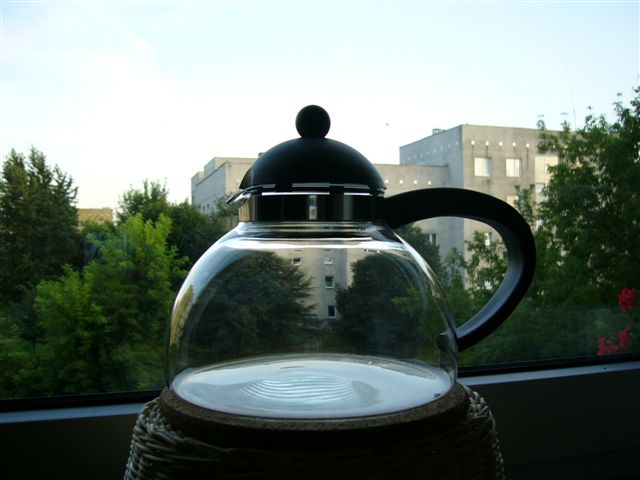1976 Baozhong
Posted on 21 July 2009
But in my case, the tea had to be special. With so many old wine vintages being poured, I wanted a tea with several decades on it. Old puer was best avoided, though, as the taste could be challenging to some diners. So I went for this 1976 Baozhong from Tea Masters (see description here
; the tea is out of stock at the moment, although Stéphane says it might be available again in the autumn).I tasted this tea several times upon arrival in November 2008, with the usual gongfu procedure of high dosage (4–5g / 150ml) and short infusions, both in porcelain gaiwan and yixing pots. While an obviously good tea, it left be a bit underwhelmed. The leaves are of a very good grade and quality (there’s very little breakage) as you can see on the photo above. This tea has been roasted to a medium-high degree (likely several times) with obvious skill: the roasted notes are well integrated into the whole. But the aromas are unremarkable, dominated by prunes and roast, and somewhat short-lived in the aroma cup. On the palate, it’s balanced and rather smooth but offers little complexity. In subsequent infusions there’s a pleasurable firmness on the finish from the roast, but not a lot of mid-palate presence and the flavours are again rather vague. It’s a comfortable but rather absent-minded tea and my notes say ‘forgettable’.
Last week’s anniversary dinner was an eye-opener for this Baozhong, after circumstances forced me to change my brewing style. To accommodate so many people, I had to choose a really large pot. My choice went for this glass pot which contains roughly a liter:
It’s the equivalent of what is called ‘glass brewing’ or ‘bowl brewing’ (see discussions here
 Looking at the wet leaves, it’s no surprise this tea is so good. The roast has been really virtuosic as many leaves are still dark green in colour (have a closer look at the twisted leaf to the far right of the photo below). And for their age, they are really impressively intact. On top of it, it’s a really inexpensive tea for its age (40€ / 100g). Dear Stéphane, I truly hope you can source some more!
Looking at the wet leaves, it’s no surprise this tea is so good. The roast has been really virtuosic as many leaves are still dark green in colour (have a closer look at the twisted leaf to the far right of the photo below). And for their age, they are really impressively intact. On top of it, it’s a really inexpensive tea for its age (40€ / 100g). Dear Stéphane, I truly hope you can source some more!

